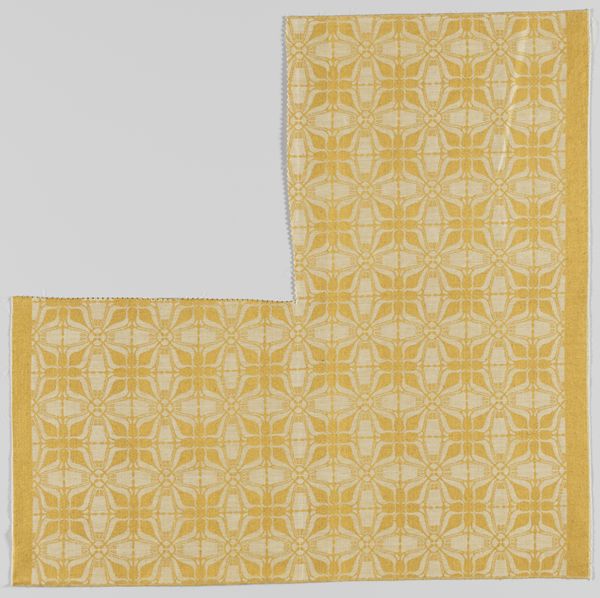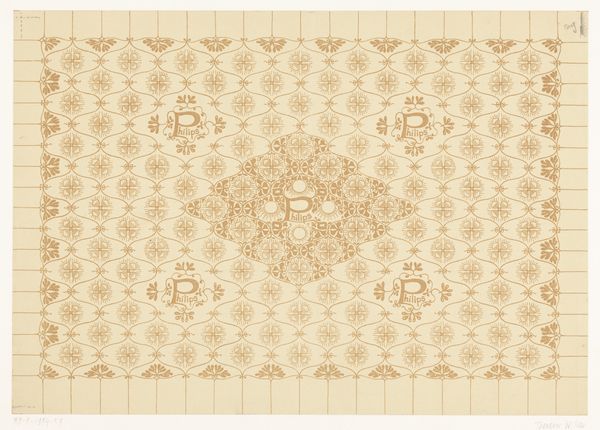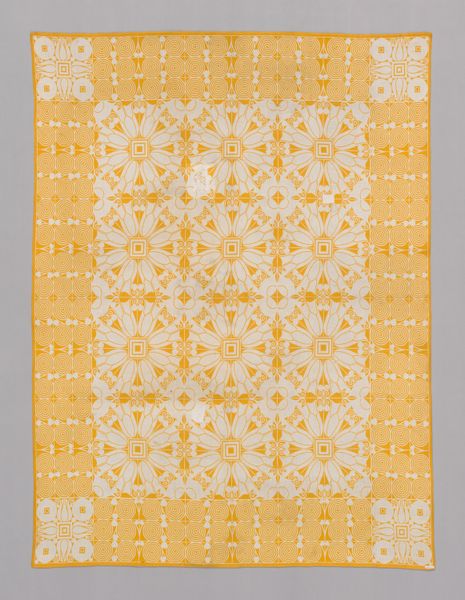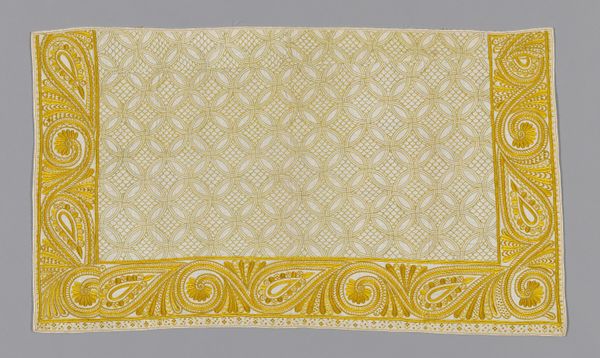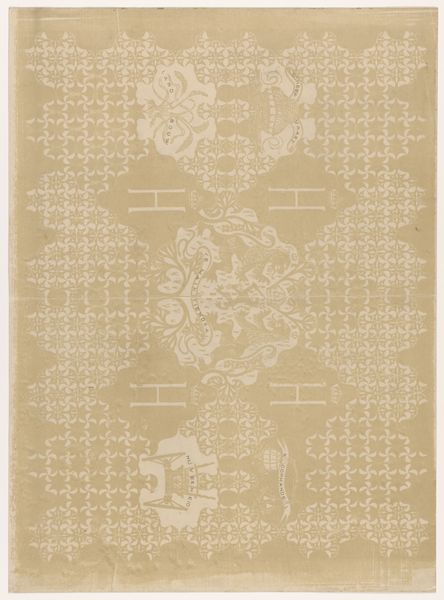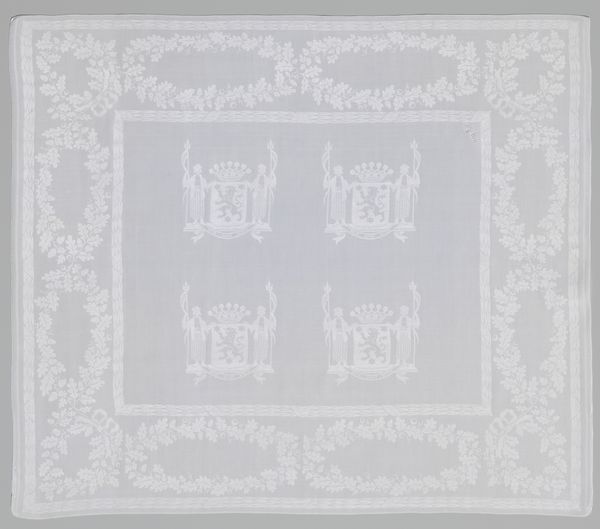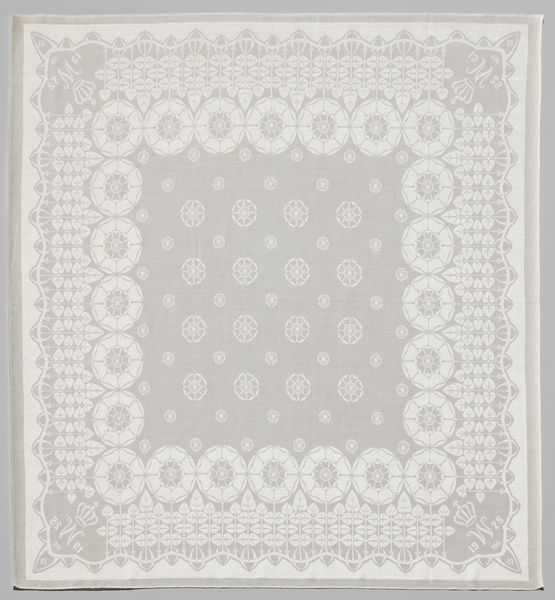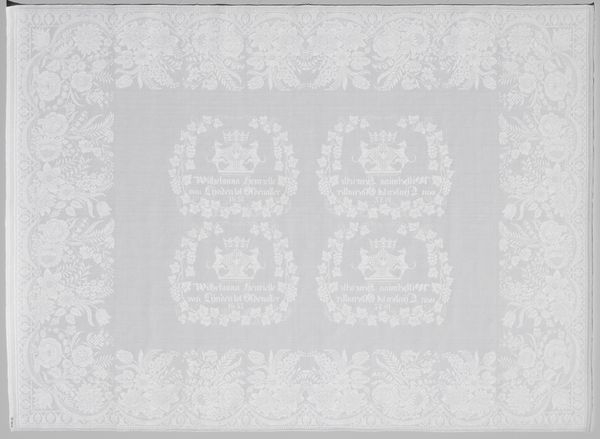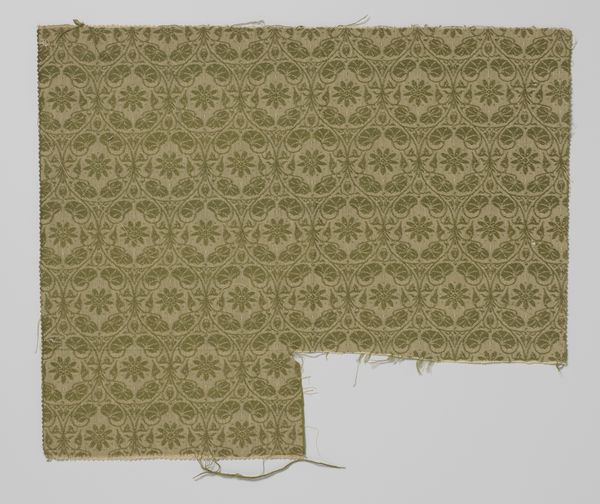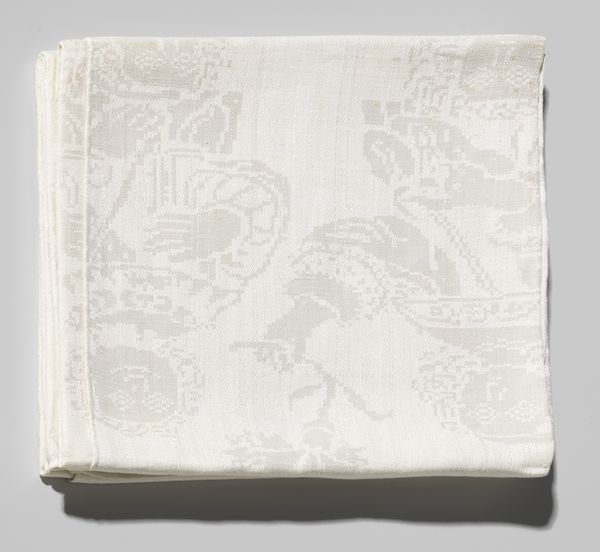
Servet van katoenen damast met wapen Hotel Normandie (?) c. 1871 - 1971
0:00
0:00
weaving, textile
#
weaving
#
textile
#
decorative-art
Dimensions: height 49.5 cm, width 48.0 cm
Copyright: Rijks Museum: Open Domain
Editor: Here we have a cotton damask napkin, potentially from the Hotel Normandie, woven sometime between 1871 and 1971 by E.J.F. van Dissel & Zonen. The pale yellow design feels very formal and institutional. How would you interpret the imagery and its cultural context? Curator: It’s fascinating to consider this napkin not merely as a functional object, but as a marker of social status and institutional identity. The presence of the crest, likely belonging to the Hotel Normandie, suggests a desire to project an image of luxury and permanence. What does it tell us about who was dining there? Who was cleaning it? Editor: Good point. I hadn’t considered the socio-economic implications. So, it represents aspiration. What’s also interesting is that this item is in a museum; doesn’t that change the napkin’s socio-cultural role? Curator: Absolutely. Placing everyday objects like this in a museum elevates them, imbuing them with new significance. It transforms the napkin from a functional object to a historical artifact. Now it speaks to the evolving social landscape of dining and the branding strategies employed by hotels during a particular period. Are we re-assessing our definition of art by displaying these commonplace textiles? Editor: I think so. By displaying items like this napkin, museums democratize the definition of art. What I found interesting, is how one family run business catered to an elite establishment. Curator: And it's precisely that interplay of domestic craft, commercial enterprise, and elite culture that makes it a worthwhile object of study. Thank you, I’ve learned much today! Editor: The pleasure was mine, thank you for the fresh outlook.
Comments
No comments
Be the first to comment and join the conversation on the ultimate creative platform.
